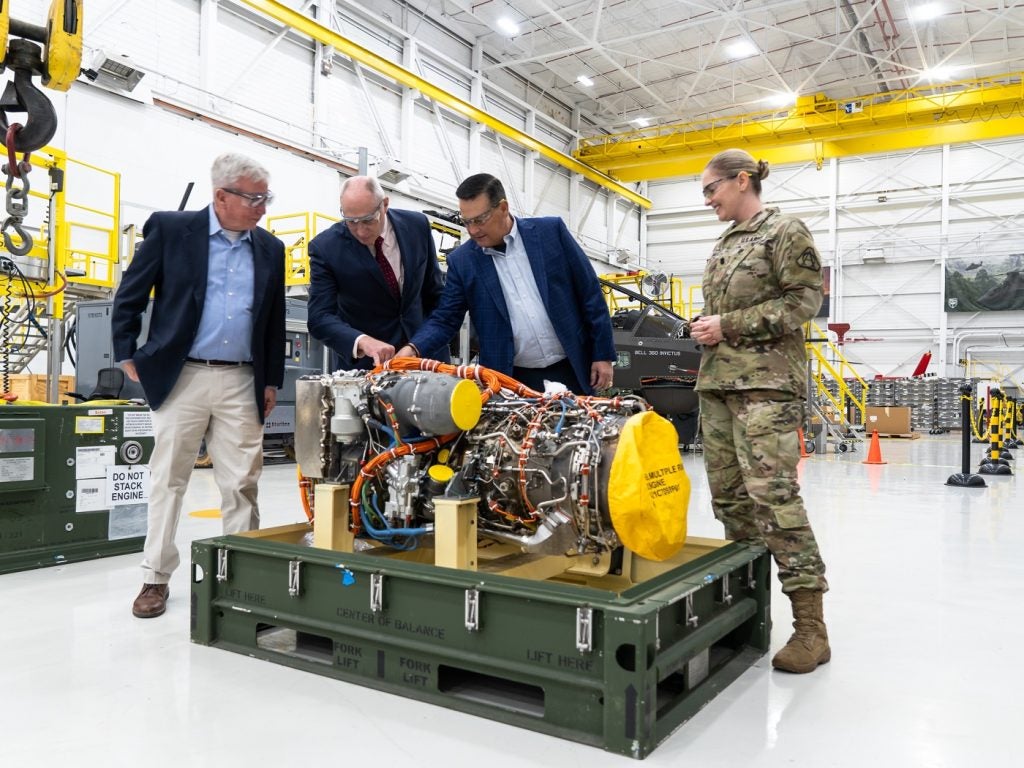The US Army's Future Attack Reconnaissance Aircraft (FARA) programme is leaping forward as the first T901 improved turbine engines are delivered to competitors' Bell's 360 Invictus and Sikorsky's Raider X programmes.
This breakthrough represents a transformative moment in the US Army's aviation modernisation, with potential implications for the enduring Black Hawk and Apache fleets.
These engines have 3,000 shaft horsepower and will pave the way for ground runs scheduled in the second quarter of fiscal year 2024 and the first flights anticipated in the fourth quarter of the same year.
The T901 engine represents the Army's first entirely new aviation turbine engine since the T700 began powering Black Hawk helicopters in the 1970s.
The US Army's Future Vertical Lift (FVL) programme aims to modernise its helicopter fleet with two new rotorcraft platforms, the Future Long Range Assault Aircraft (FLRAA) and the Future Attack Reconnaissance Aircraft (FARA), by 2030.
The significance of the T901 extends beyond FARA; it is set to replace the T700 engine currently employed on the AH-64E Apache and UH-60M/V Black Hawk helicopters. This transition promises a boost in fuel efficiency, range and loiter time while reducing maintenance and sustainment costs.
This is especially vital for these aircraft, which have seen numerous enhancements over their four-decade service, causing increased weight. The T901 is engineered to restore lost payload capability, particularly in challenging high/hot conditions.
The T901 engine has advanced technologies including additive manufacturing, ceramic matrix composites and traditional components to generate an additional 1,000 shaft horsepower while maintaining a similar size and weight to its predecessor.
Furthermore, the T901 introduces predictive logistics through an onboard engine health management system, reducing the need for spare parts and enhancing component life.
The FARA programme employs a competitive prototyping strategy with two phases to select a contractor for designing and building the aircraft. Phase two continues with competitive prototype ground runs and joint flight performance demonstrations, influencing future programme milestones.
Bell Textron and Sikorsky have received the T901 engine, which allows them to advance in the FARA competition. For Bell's 360 Invictus, this marks a milestone toward ground runs and the eventual first flight. Bell and Team Invictus have prepared their support infrastructure, supply chain and manufacturing hub for the following stages.
Now equipped with the T901 engine, Sikorsky proceeds with the installation process on its RAIDER X aircraft. With its improved fuel efficiency and increased power, this engine also enhances the UH-60 Black Hawk fleet in the Army.
As we await the first flights of these prototypes in late 2024, the T901 engine's delivery shows a future for Army aviation, ensuring that both piloted and autonomous capabilities are on the horizon. With increased speed, reach and lethality, the FARA programme fills a reconnaissance capability gap and strengthens the Army's readiness to complete missions.









